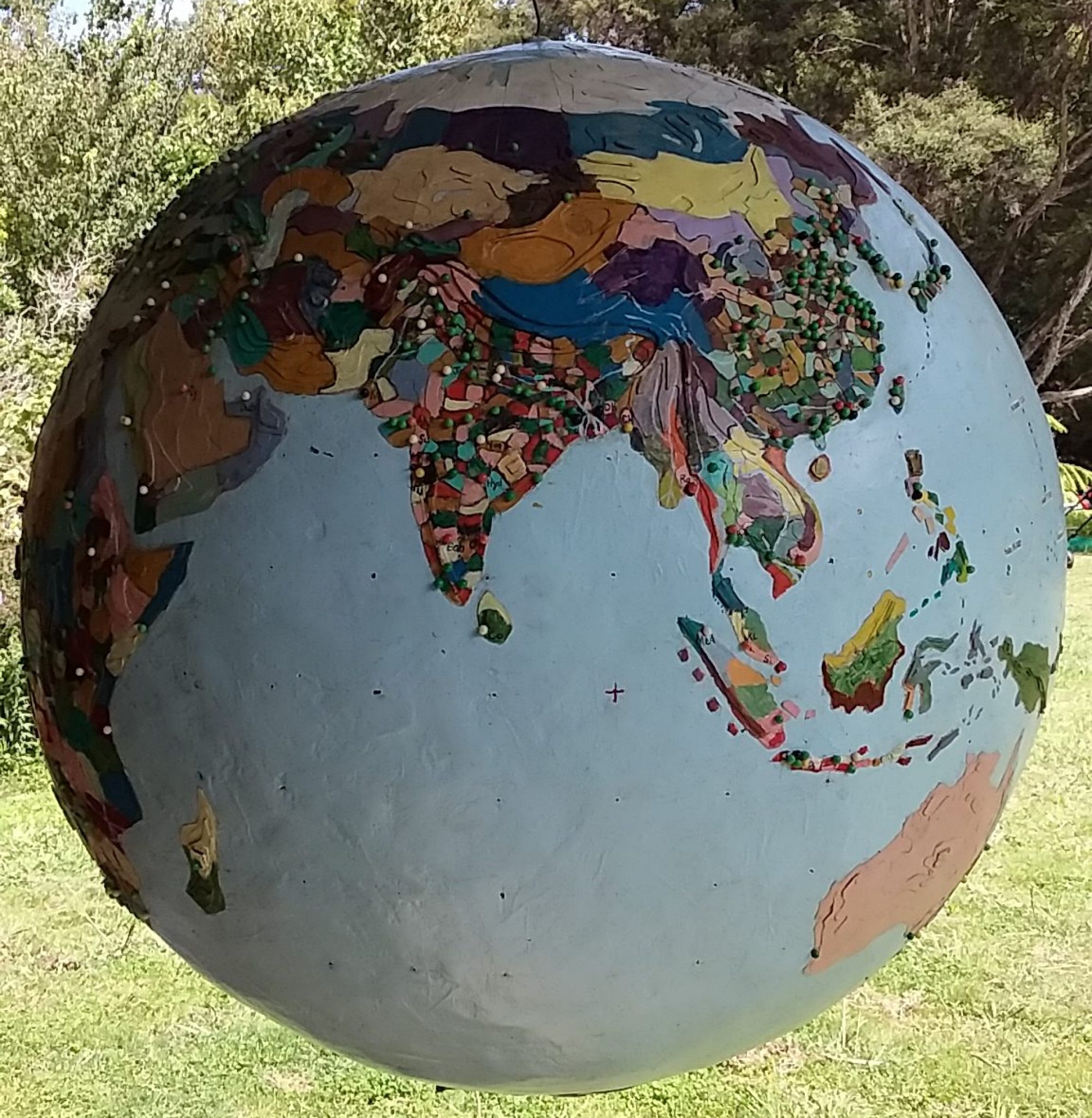Millisphere (noun): a discrete region inhabited by roughly one-thousandth of the world population. Around seven million but anywhere between 3.5 and 14 million will do. A lens to examine human geography.
 Kyoto prefecture (2015 population 2.6 million) is too small to qualify as a millisphere. Kyoto is part of the Kansai region (23 million) which includes the city of Osaka (8.8 million). Kyoto combined with neighbouring Shiga prefecture (1.4 million) gives a total population of 4 million.
Kyoto prefecture (2015 population 2.6 million) is too small to qualify as a millisphere. Kyoto is part of the Kansai region (23 million) which includes the city of Osaka (8.8 million). Kyoto combined with neighbouring Shiga prefecture (1.4 million) gives a total population of 4 million.
The Shiga prefecture surrounds Lake Biwa (the largest freshwater body of water in Japan) and is within commuting distance from Kyoto. Shiga recently considered changing the name of their prefecture as one strategy to attract tourists away from Kyoto.
Kyoto has more visitors every year than either Mecca or Disneyland and is now suffering from “over-tourism”. Mecca has 15 million pilgrims annually (four million for the haj) and Disneyland Anaheim, LA has 18 million paying visitors every year.
Because of its history and its temples Kyoto was already a popular destination for the Japanese and visitor numbers hovered around 40 million per year from 1975-99, hit 50 million in 2008, and by 2015 there were 57 million tourists, around half of them foreigners, bringing US$9 billion to the city that year.
In 2003 there were only five million foreign visitors to Japan, which then launched the “Visit Japan” campaign. By 2017 there were 27 million foreign visitors, 85 percent of them from Asia. Three-quarters of Japan’s foreign tourists come from just China, Korea, Hong Kong, Singapore and Taiwan.
In 2005, on a stop-over on the way to Europe, I was one of those foreign tourists. Tourism locations around the world are popular for a good reason and Kyoto’s reason is it’s temple gardens. The reason I wanted to see them was quite prosaic; I was a landscape gardener and had seen photos of famous Japanese gardens.
I knew that these minimal, natural but somehow stylised compositions had their design rooted in the Japanese culture and the Shinto and Buddhist religions. Once while grappling with the aesthetics of rock placing, in New Zealand, I found myself climbing up a stream bed after a summer flash-flood. The way the rocks and sand had been rearranged read like a static representation of the forces of nature and seemed pleasing to my eye. I decided then that one day I wanted to make the landscaper’s pilgrimage and see the rock gardens of Kyoto.
At Osaka airport we were met by Masami, from nearby Mie, who had stayed with us in New Zealand when she had toured our country. Personifying the Japanese spirit of Omotenashi (hospitality) Masami shepherded us by rail to Kyoto and a hostel, stayed the night, took us around some prime sights, went back to work, and returned on the last day to put us back on the plane at Osaka.
It was winter and the off season in Kyoto. Snow had recently crushed bamboo, rushes and grasses and then melted away. Black crows called from the trees and white herons waded in the cold Kamo River. We headed for Rokuon-ji Temple to see the pavilion, papered with gold leaf, reflected in its landscaped pond.
At the top of my list was Rhoan-ji with its garden of rocks and raked sand thought to represent who knows what. Around the back (I didn’t realise that there was a back, or an approach) there was a water-basin. The inscription on the stone basin said “I learn only to be contented”. Masami translated it as “I learn so I will not want.” More to the point I thought.

At Daitoku-ji my preconception of the Japanese garden was shattered. One garden was dedicated to Sorin Ohtoma (1530-1589) a Christian feudal lord from Kyushu. Viewed from a corner of the garden, rocks are arranged to hint at the reclining form of a cross – a cross “burdened on the multitude of the world, symbolised by the numberless grains of sand.”
These days the multitudes are the flag following, selfie-stick wielding tourists, feverish to photograph everything, desperate to consume the next experience, and caring little for the consequences. One solution to “pollution by tourism” is to stay at home.

